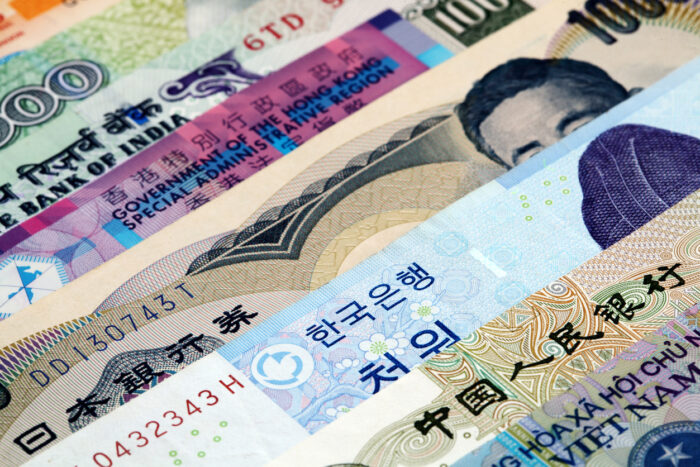According to industry experts, many Asian currencies fell against the dollar on Monday due to Israel’s bombardment of the Gaza Strip, including the Chinese yuan, the Japanese yen, and the Indian rupee. Experts have noted that appetite for risk-driven currencies has fallen in the past three months and remains delicate, while the dollar remains stable despite the strong US inflation data for September.
Asian currencies see falling data amid global conflict

Data on the Chinese yuan notes that lifting Covid-19 restrictions earlier this year has not boosted business transactions as much previously predicted, with the yuan falling 0.1% this week. Its third-quarter gross domestic product data is due later this week, which may shed some light on China’s subdued economic growth and inflexible lending rates.
Don’t miss out the latest news, subscribe to LeapRate’s newsletter

James Malcolm Source: LinkedIn
James Malcolm, head of FX strategy at UBS London, observed the slowing signs of the yen and the Bank of Japan’s necessary intervention, all as a result of the Palestine conflict and Russia-Ukraine war:
Obviously, war is inflationary; [it] disrupts growth and threatens risk assets. […] The largest overhang I can see in this regard is dollar-yen, where the BOJ must pivot regardless, and the carry trade that has built up now amounts to nearly half a trillion dollars.
Despite the weakening of its peers, the Indian rupee remained relatively stable on Monday against the US dollar, with the Reserve Bank of India (RBI) stabilising local oil prices throughout the nation. According to experts, it seems that the RBI may have intervened on Friday to prevent the rupee from slipping as low as its Asian counterparts; however, all Asian currencies now await economic data from the US Federal Reserve regarding interest rate hikes and global inflation levels.